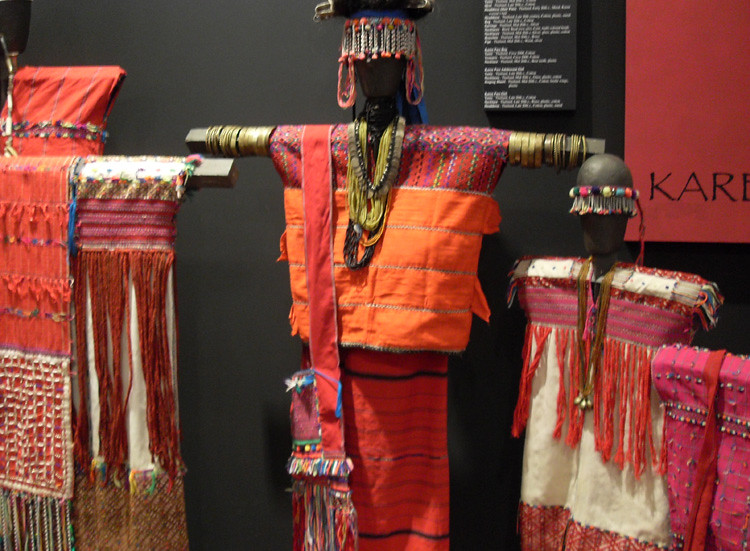
Recent research for a project that I am working on, led me back to an exhibition that I went to while I was in Chaing Mai Thailand almost three years ago. Songs of Memory, Traditional Music of the Golden Triangle was on display at the Cultural Center. Along with musical instruments, each minority group was represented by their traditional dress.
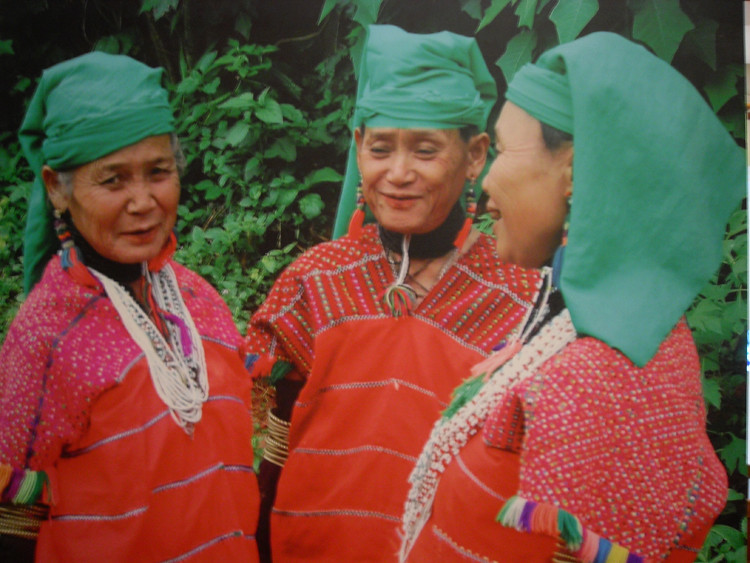
Large almost life size posters showed everyday life in the villages. These women are from the Karen Hill Tribe.
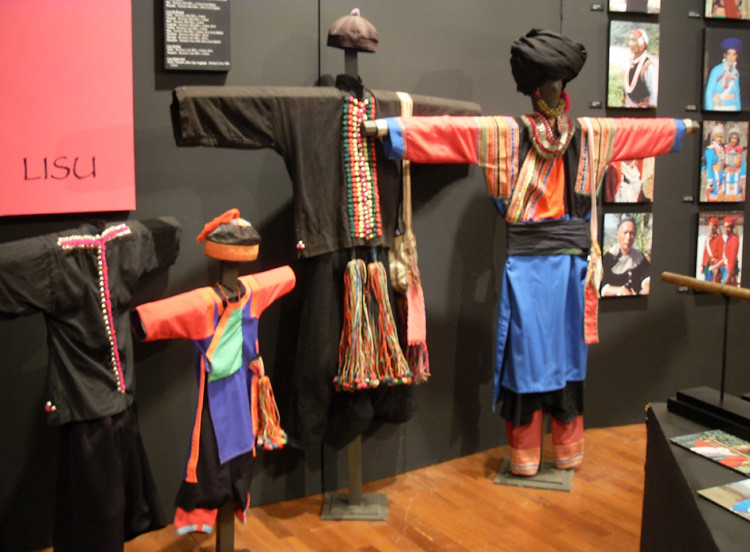
In the Lisu Hill Tribe it seems that the women and girls dress far more colourfully than the males. Although those tassels are pretty impressive.
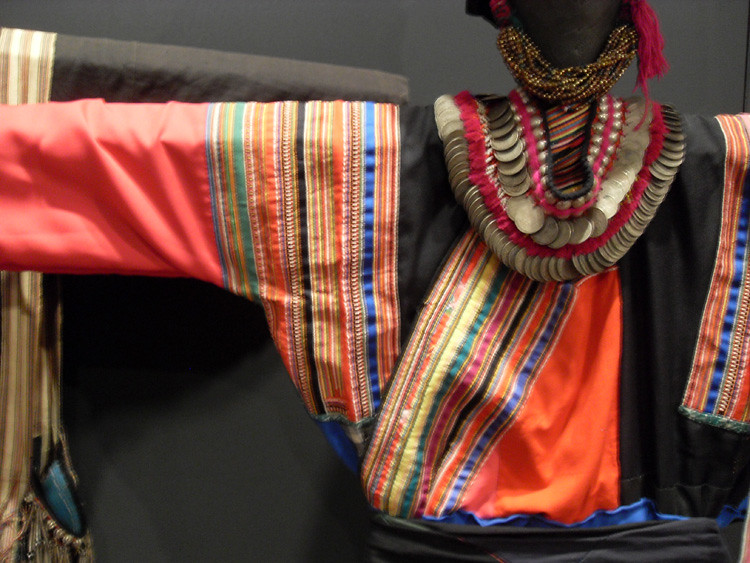
The narrow strips of fabric sewn together form contrasting stripes.
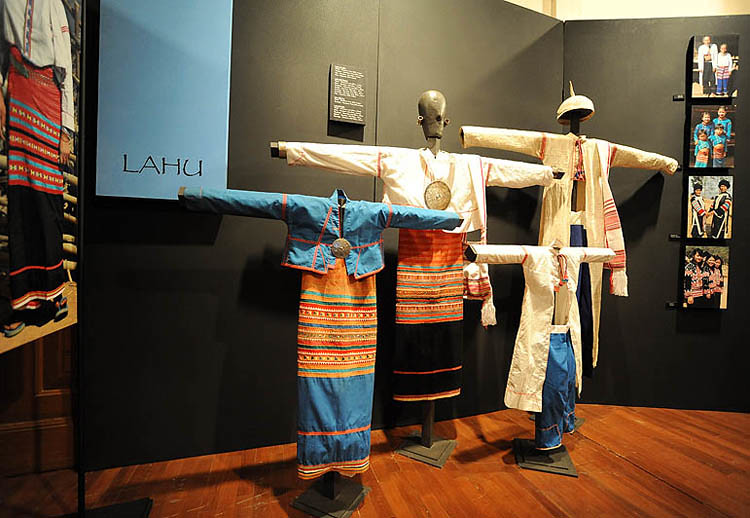
The Lahu Hill Tribe seem to favor the natural colour of their hand spun cotton. Indigo blues are often in paler shades. It shows how layers of indigo are built up to achieve the darkest of blues.
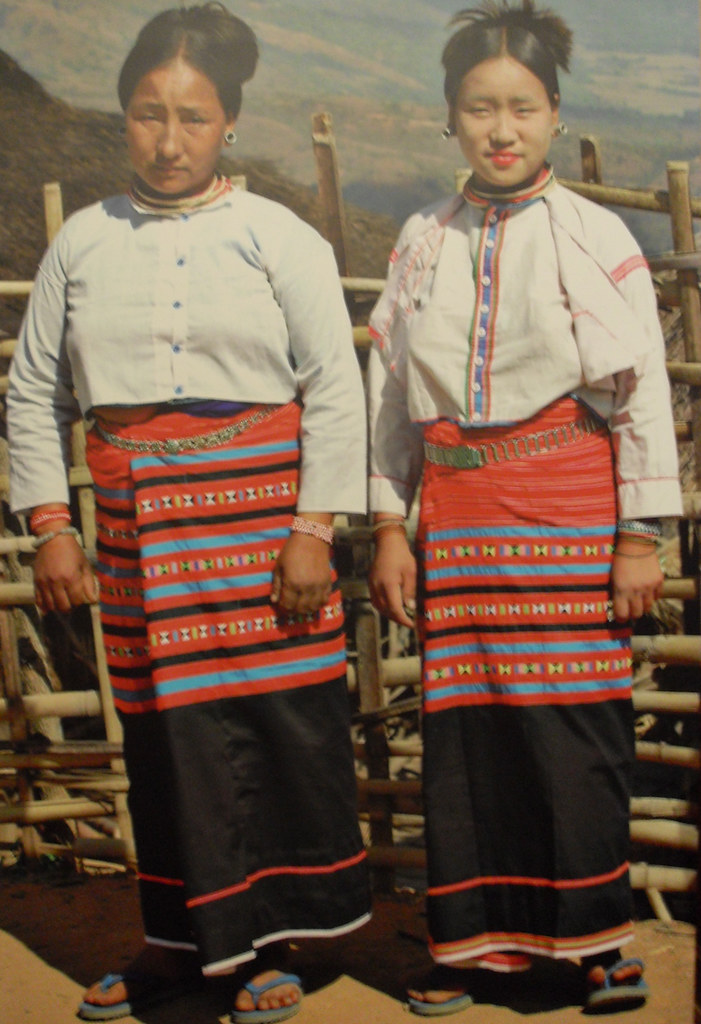
The tiniest pieces of fabric are sewn together to form the patterns.
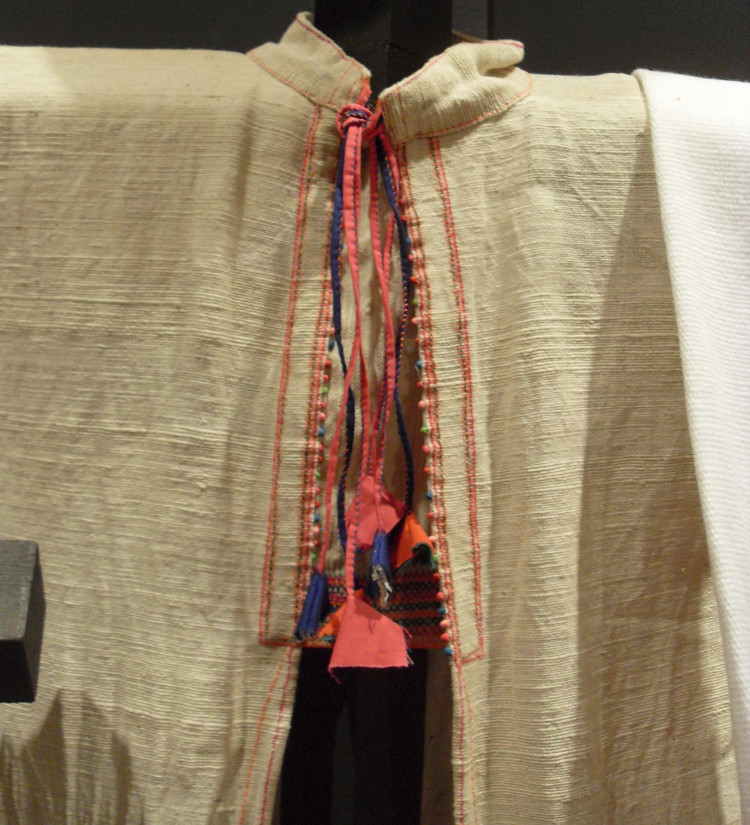
Although plain in comparison to a lot of the other clothing. This mans jacket has some interesting detail on the closure. You can see from the slight unevenness of the weave that the cotton has been hand spun.
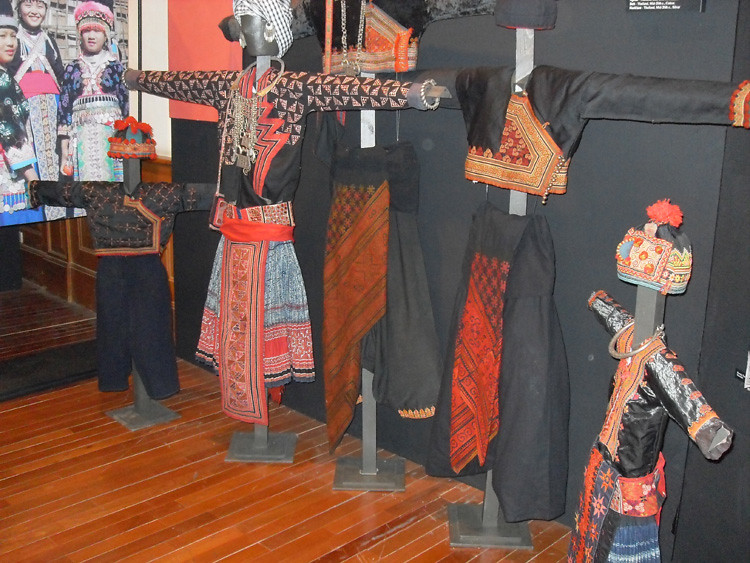
The Hmong Hill Tribe was my obvious favorite by the number of photos that I took. The attention to detail. Tiny pieces of fabric sewn into patchwork and the incredible cross stitch was what won me over.
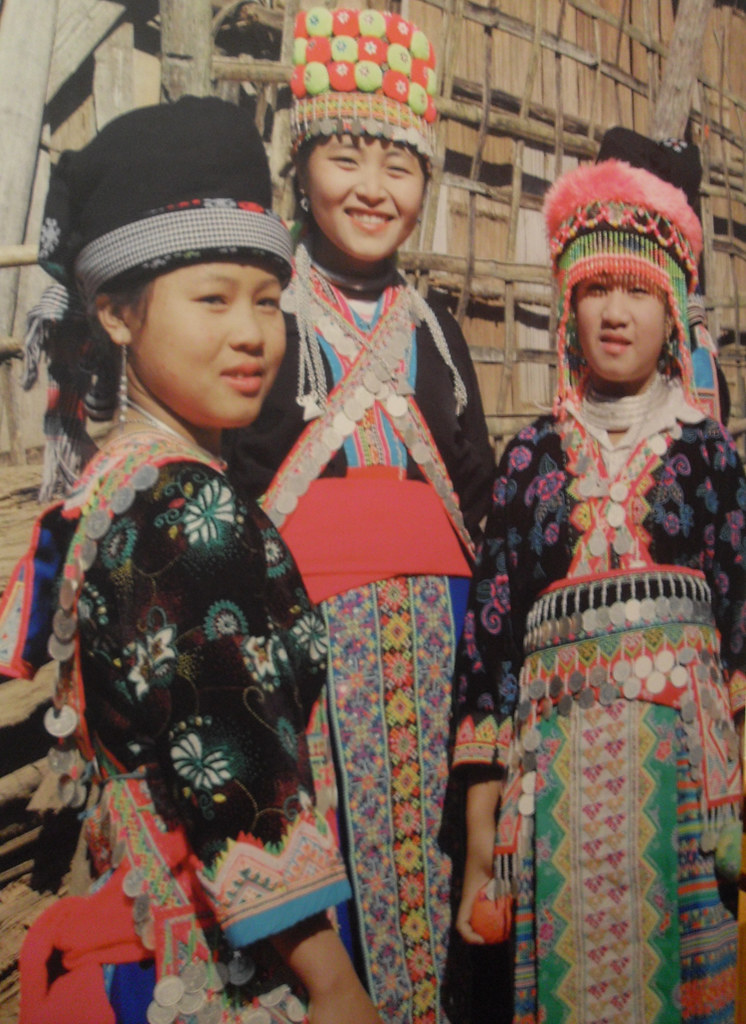
They call Thailand.........the land of smiles. You can see why.
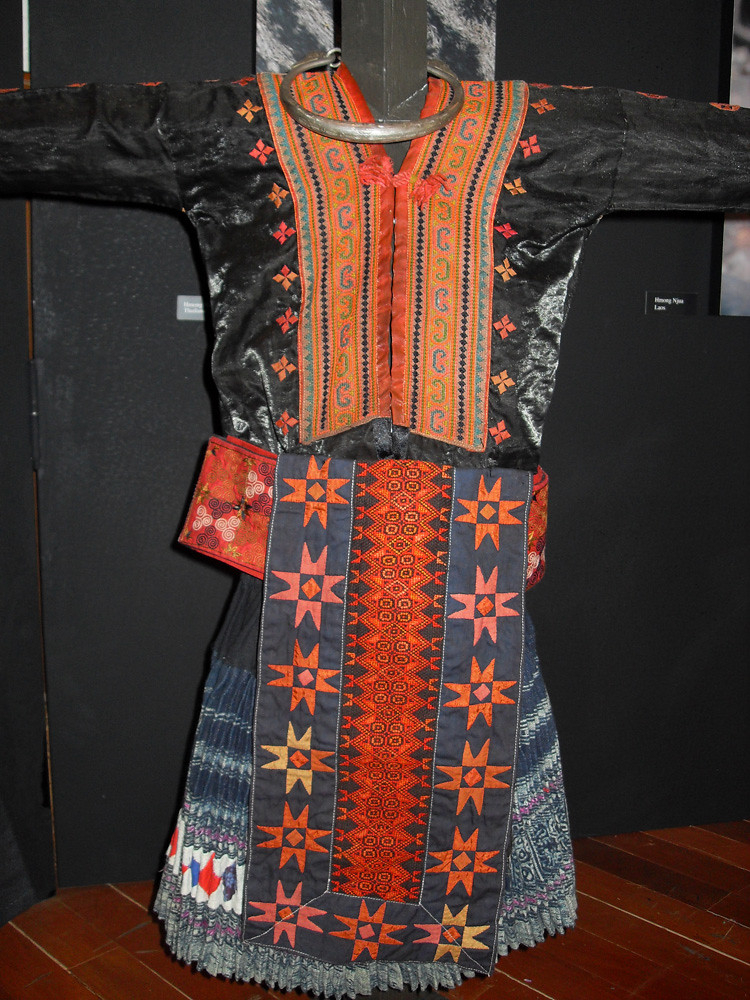
The amount of skill that has gone into this one child's outfit is just amazing. It is difficult to begin to describe the different techniques used here. The skirt on this girls costume does not have the patchwork detail running around the entire skirt.
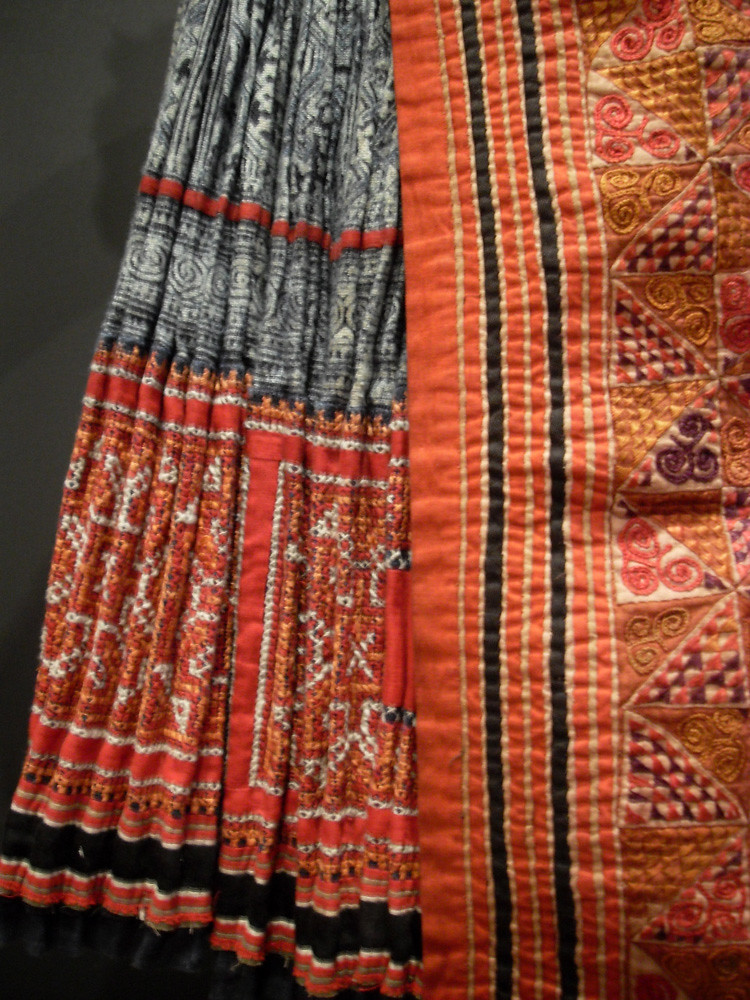
The adult skirt has a deep band of cross stitch. The skirts are indigo dyed batik. I actually bought an antique piece of this fabric while I was in Chaing Mai to make into a runner for my dining room table. The embroidered detail in the sash is beautiful. Tiny areas are similar to the woman's top.
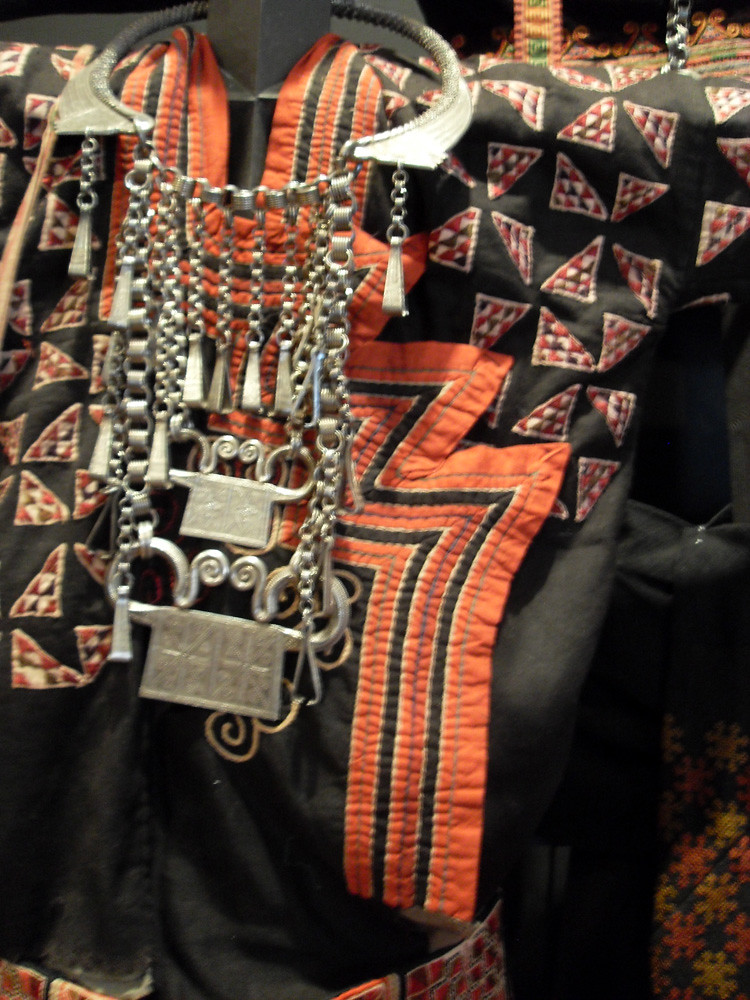
The ornate jewelery looks like it would be very heavy to wear. The pattern on the top is embroidery. Again here narrow strips of fabric are sewn together to form stripes.
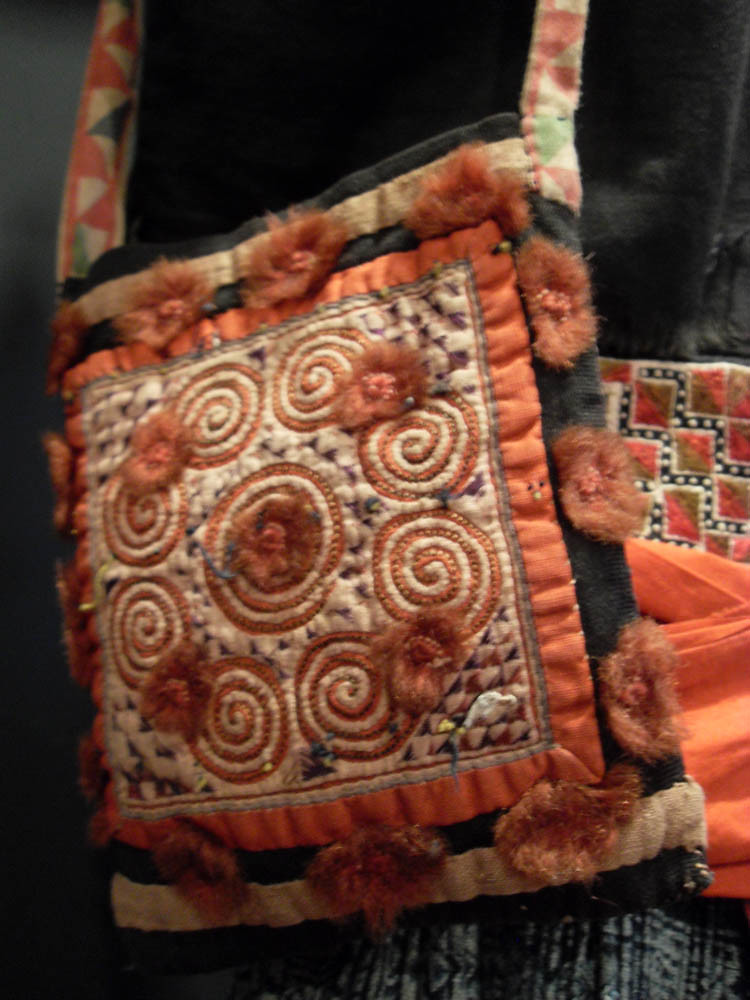
The amount of detail in the woman's little bag was amazing. Although the strap on the bag appears to have the pattern painted or stenciled on.
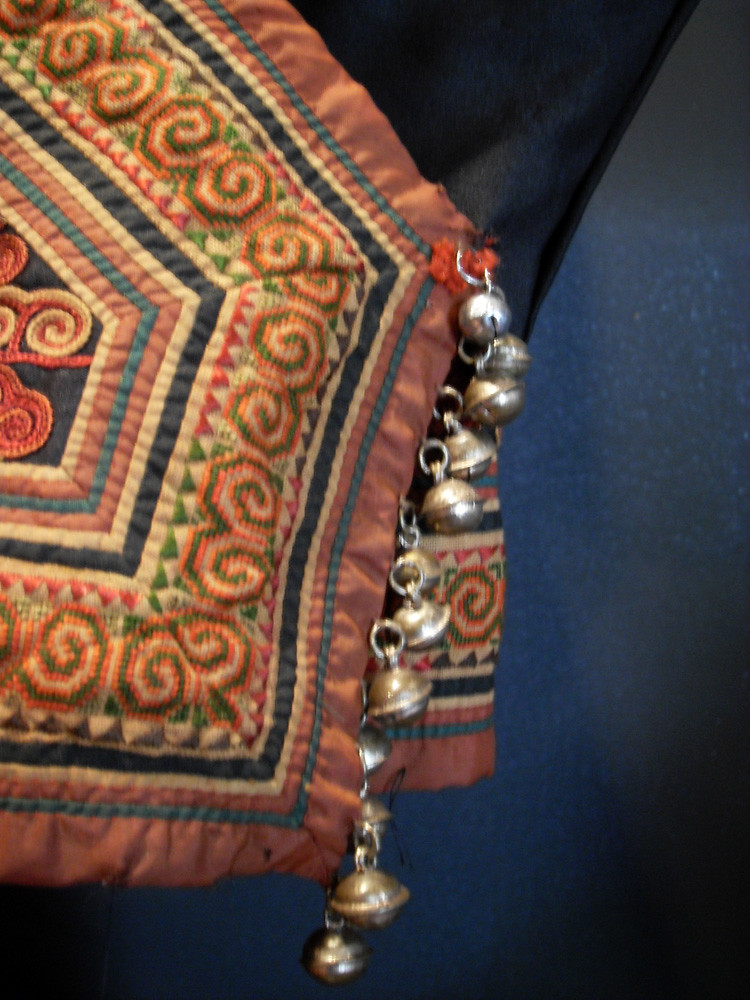
The closures on the tops are interesting, not afraid of making a statment on adding adornment.
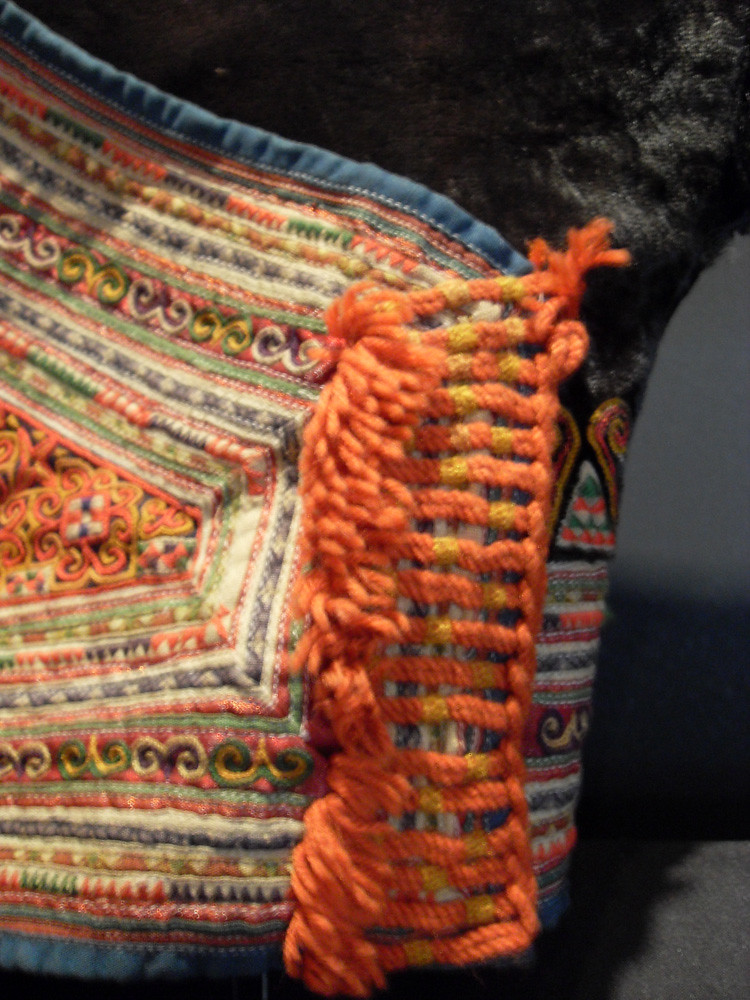
A few of the closures and pom pom details were wool, but Thailand is too tropical to keep sheep so they must purchase or trade the wool that they use.
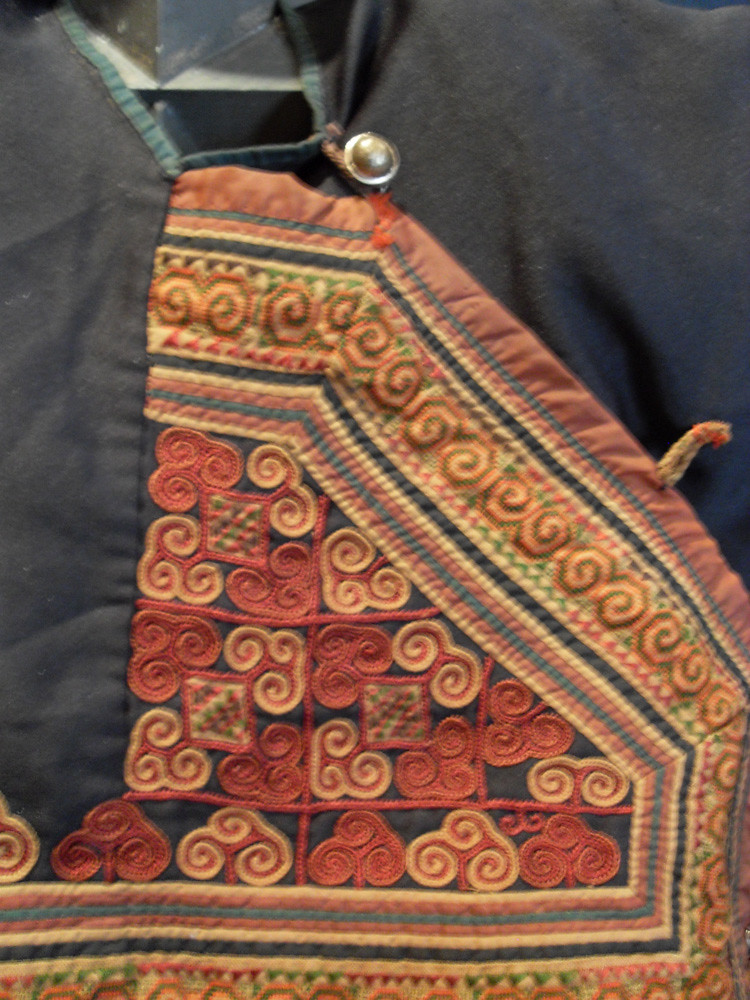
More exquisite embroidery detail.
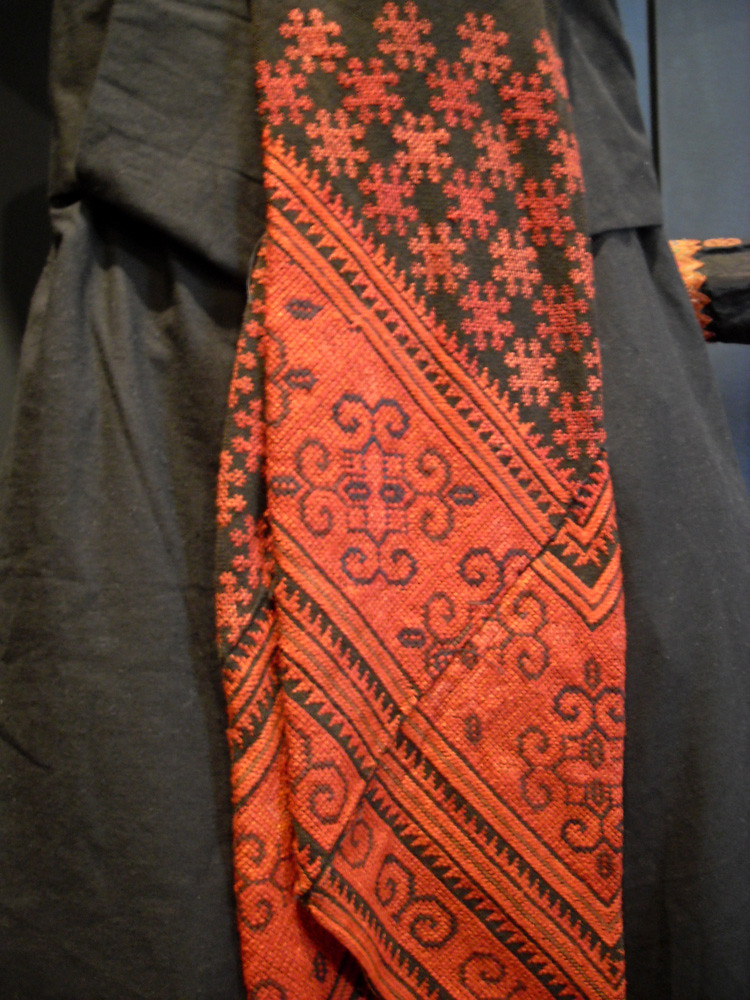
This boys sash shows the extensive use of cross stitch for decoration.
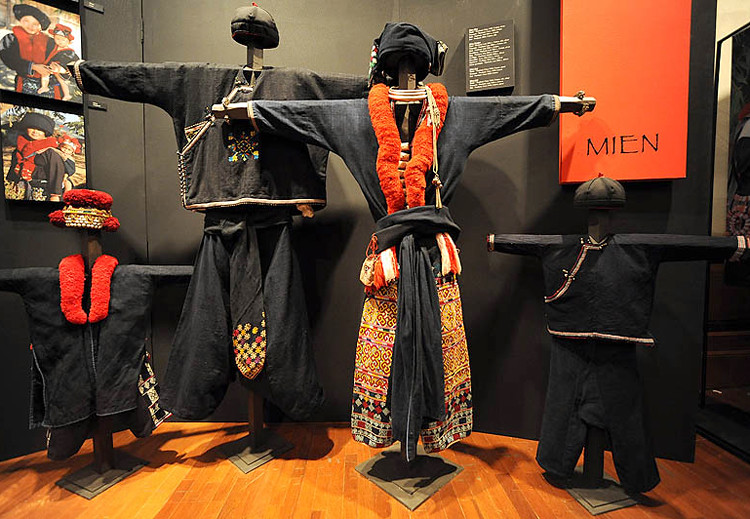
The Mien Hill Tribe wear the darkest indigo. Appearing almost black. Maybe at first glance the seem the plainest of dress in the minority groups. The ornate women's pants are quite amazing.
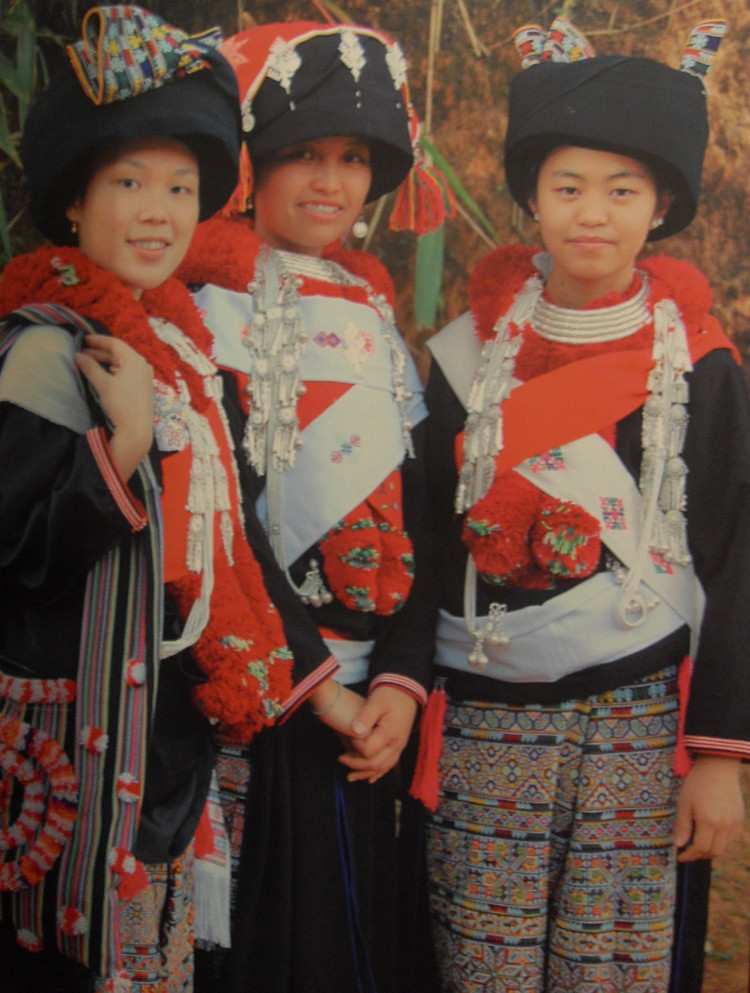
These young girls are decked out in their finest.
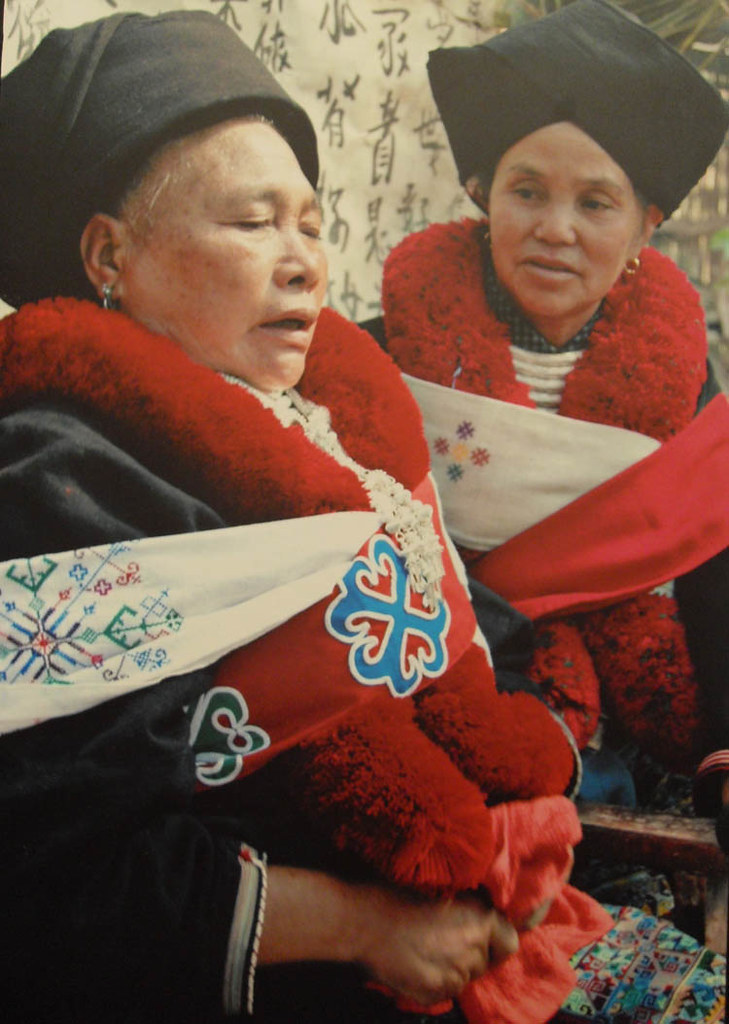
The Mien are easily recognized by their bright red neck wear.
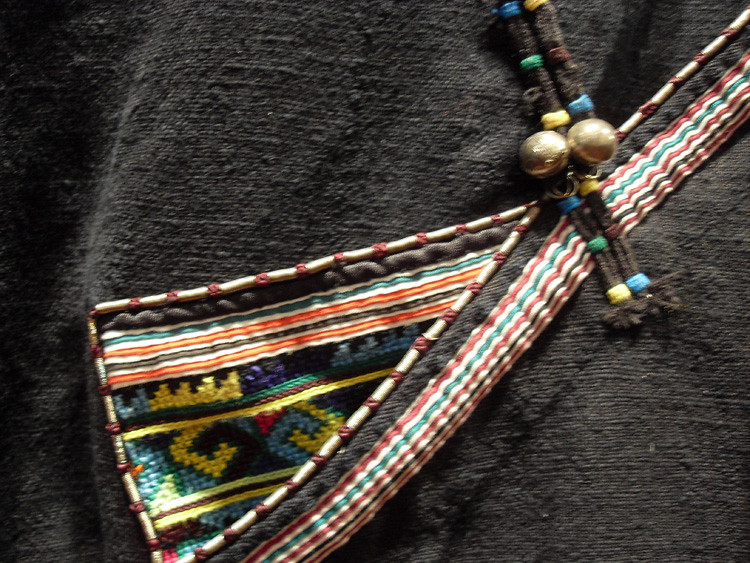
Simple can be beautiful, I love the detail on the closure of this top.
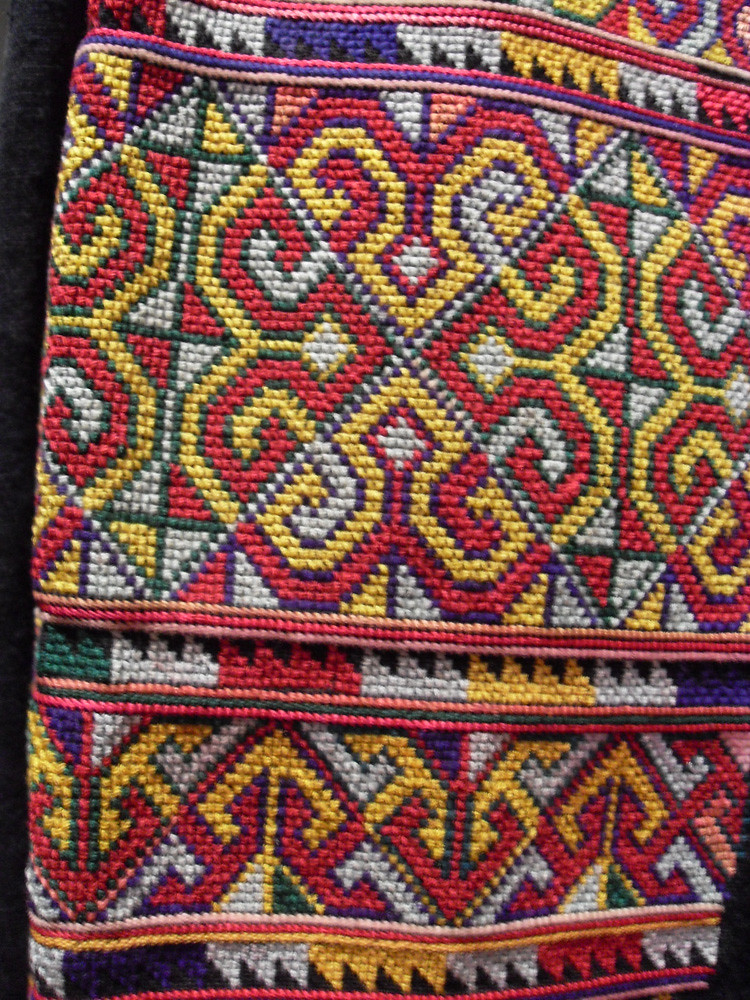
Exquisite detail of the woman's pants.
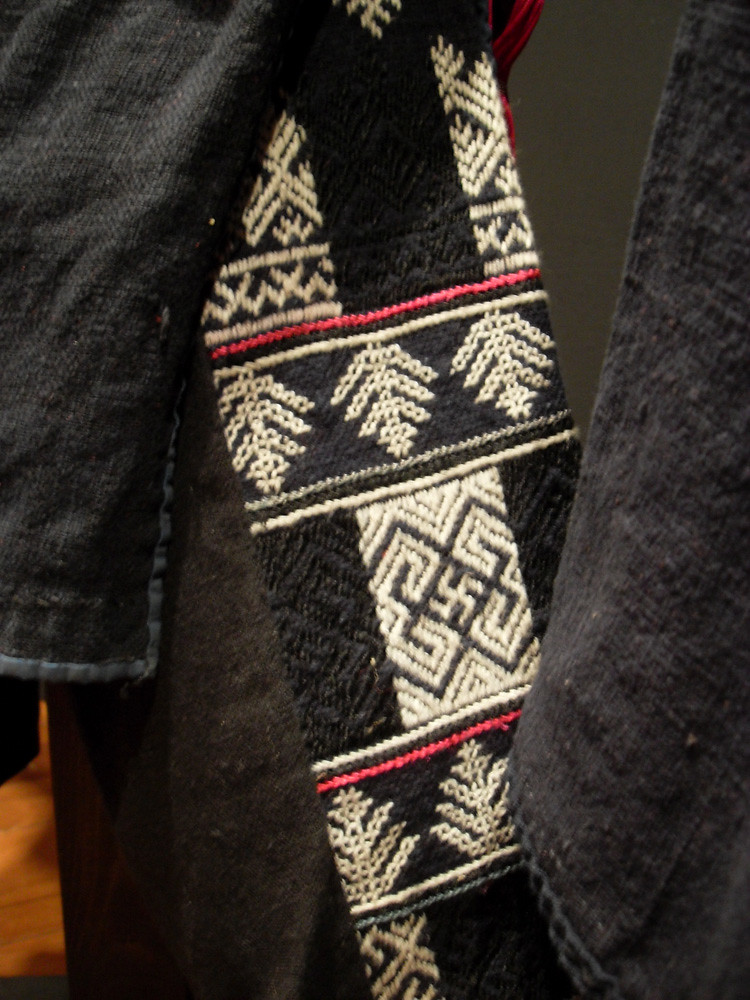
Part of a sash on the girls costume.
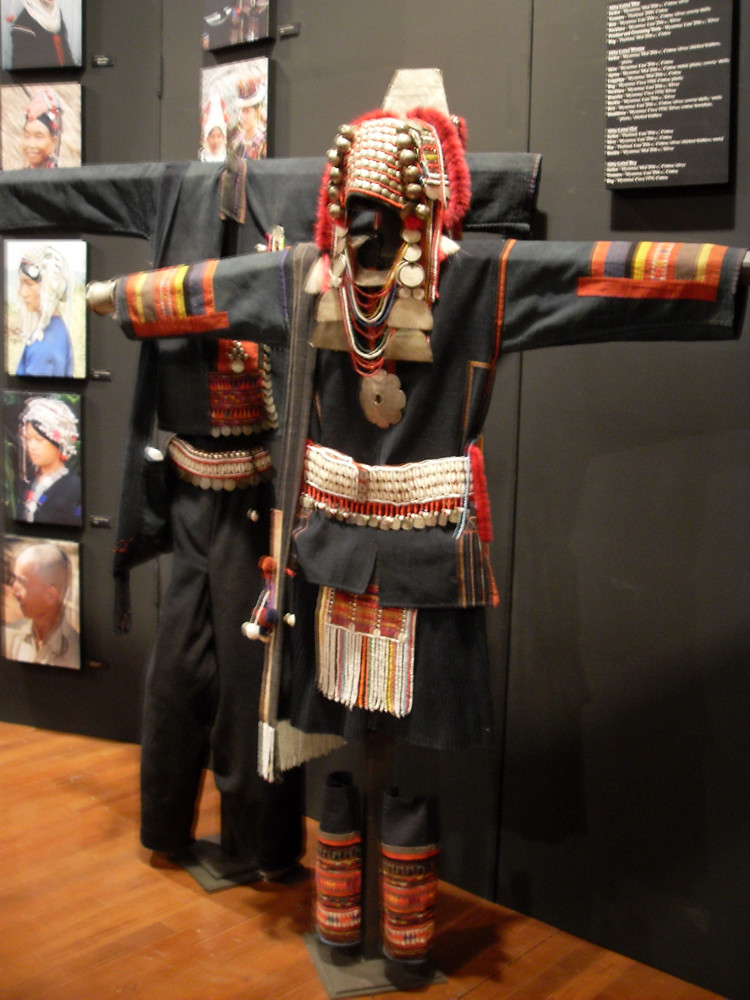
The Akha Hill Tribe was the only display that did not include children's dress. The jewelry and head dress were wonderfully ornate.
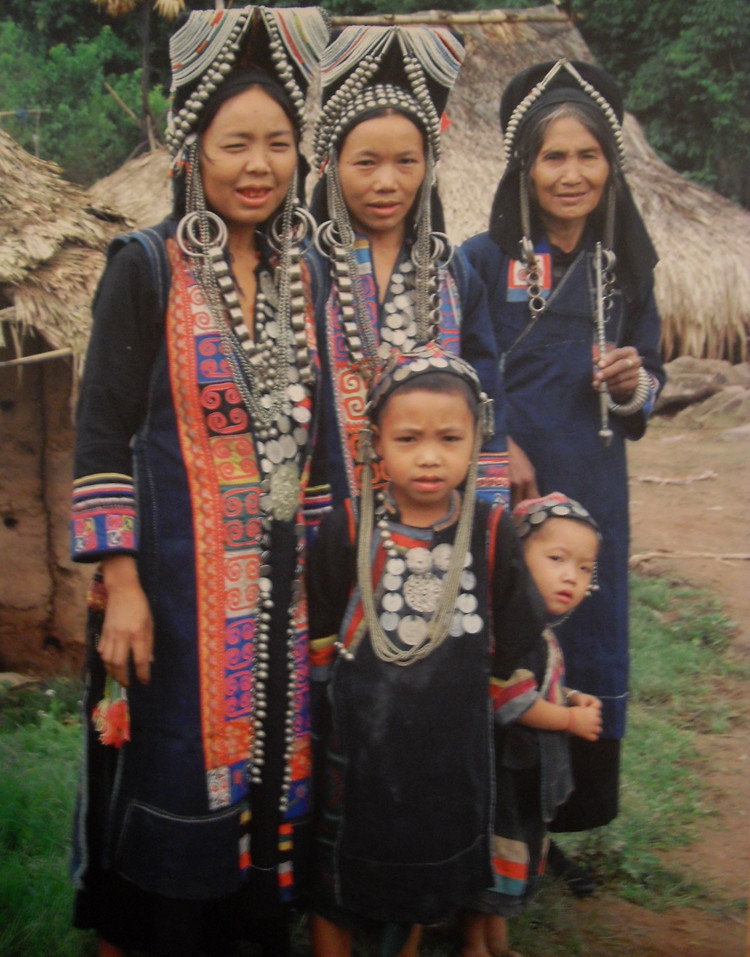
From the poster it seems that this tribe have many different styles of dress. Or maybe they were from a different region of the Golden Triangle.
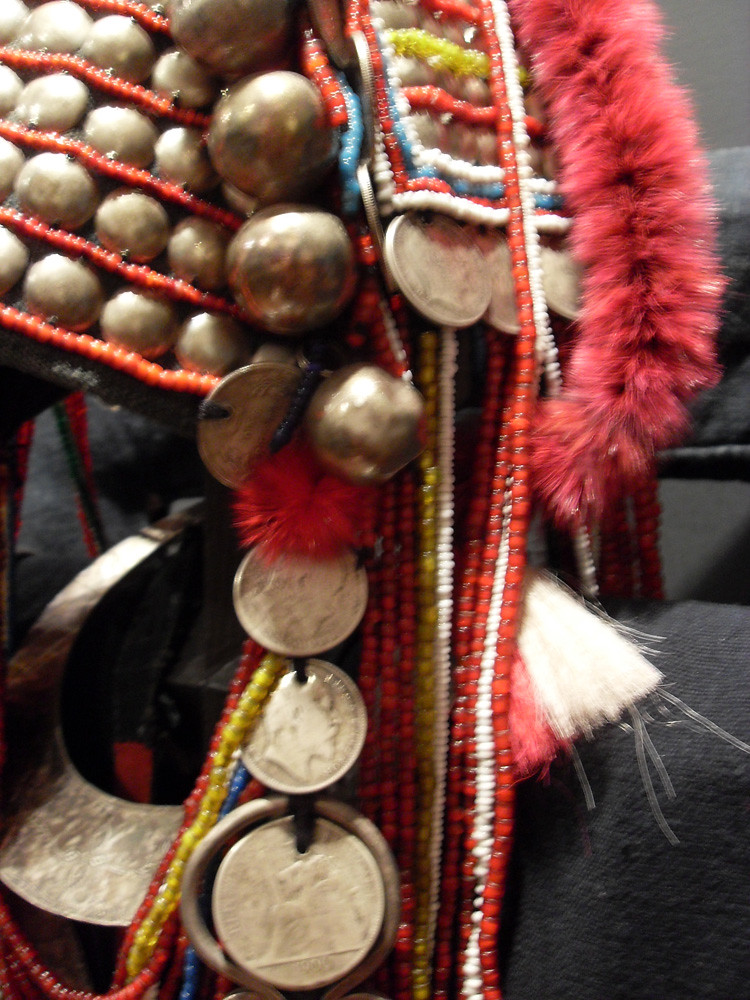
You can see the coins they use for decoration. Maybe they are handed down through the family.
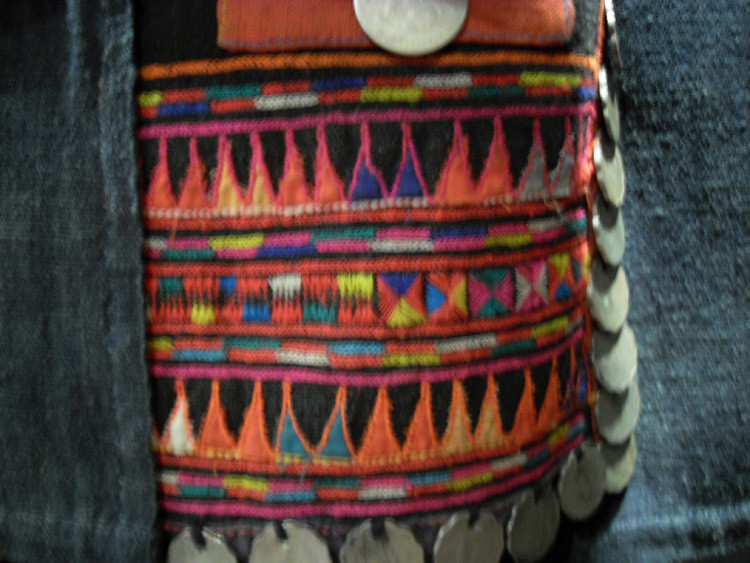
Tiny patchwork and embroidery detail along with many tiny coins. I do remember that the currency in Thailand is very small and for someone who wears reading glasses it was very difficult to read the tiny writing each time that I bought something.
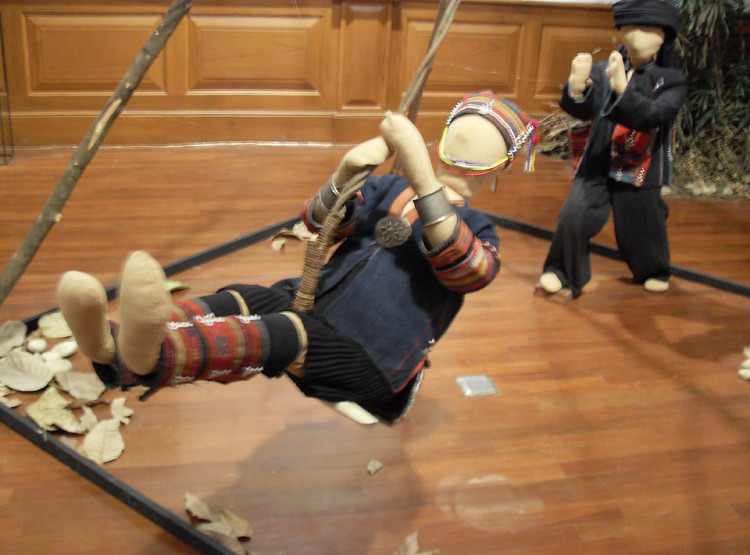
I had long been interested in the the minority groups of the Golden Triangle and was so lucky to be in Chaing Mai while this exhibition was on. Every Sunday night there is a market in the old part of the city where the Hill Tribes come down and sell their handcrafts. I had never before been to such and incredible market. Many of the stall holders wear their traditional dress. If you ever plan a trip to Chaing Mai make sure that you are there on a Sunday evening. It is a treat not to be missed.
This project Songs of Memory Traditional Music of the Golden Triangle was the culmination of many years of research by Victoria Vorreiter you can visit her website and read about her projects here.
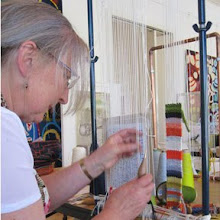


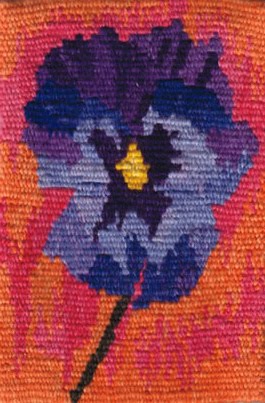
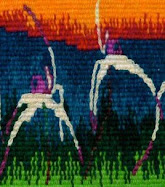


Hi Debbie,
ReplyDeleteIt looks like you had an inspirational trip. It makes me realise how much there is still to learn - and so little time. It is good to focus on things but then you realise that there is so much else out there. Thanks for the eye-opener. I hope the research is fruitful for you.
Wonderful photos and most wonderful dresses and embroideries. Thank you for sharing.
ReplyDeleteChrista
Hi Mary, I was so lucky to have seen the exhibition. It has been so hot here I think that the brain melts as well as everything around us! Not a great time to try to weave...but I may get there!
ReplyDeleteHi Christa, they are amazing clothes. I just hope that they don't follow the trend of dressing like everyone else in the west.
ReplyDeleteSawasdeekaa, Debbie,
ReplyDeleteI so appreciate your interest in my Songs of Memory project, which highlights the traditional music and ceremonies of the six major groups in the Golden Triangle region. My aim was to create a multi-media experience that gives a glimpse of the culture of these peoples through musical instruments, textiles, films, photos, and text. So for any of your readers interested in the soundscape, along with the beauty of the garments, it is a rich, amazing world, indeed. Do explore the music at: www.TribalMusicAsia.com
Next time you come to Chiang Mai, please do look me up. It would be a pleasure to meet you. Just check the contact section on my site.
Warm wishes, Victoria Vorreiter
Victoria, how wonderful to hear from you. Your exhibition was my highlight of Thailand! I will contact you next time I am in Chiang Mai!
ReplyDeleteMany Thanks.
ReplyDelete